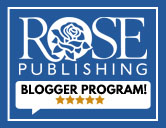
Much like you would not pick up and read a novel in the same exact way you would a newsletter, we must also approach epistles in a different way than other genres of the Bible. Here are a few tips for how to study an epistle.

- Identify the genre. The first step in studying any book of the Bible is to determine what kind of writing it is: a narrative, a book of prophecy or poetry, or in our case, an epistle. It is helpful to also know which type of epistle it is; some epistles were written to a public audience or a church, while others were more private and addressed to an individual.
- Determine the occasion. The most crucial step for interpreting an epistle is knowing that it was written for a specific occasion, even when the subject matter is broadly about the faith. In this sense, the epistles are occasional. This means that the writers, inspired by the Holy Spirit, wrote to a church, churches, or a person within a specific context with specific concerns, and the letter addresses all these things. Ask yourself, “Why is this letter being written?” This question gets to the heart of the letter’s occasion. It may be that the recipients need to be challenged, encouraged, reminded, taught, or corrected—or all the above. Because the epistles are occasional, this means that when we read these letters two thousand years later, we cannot directly apply what the letter says to our circumstances today without first asking what it meant to those who received the letter. After we ask about the purpose and meaning of the letter to the original audience, then through careful study, we can begin to apply the content of the letter to ourselves and our churches now.
- Observe the context. Observing the context could mean asking who the author of the letter is and getting to know more about his credentials, which many writers declare in the first several lines of an epistle. Also, discovering what the author’s relationship might be with the recipients can draw out important meaning. For example, some of Paul’s letters sound intensely personal, like his correspondence with the Corinthian church or with Timothy, while others have a more distant association, like his letter to the Colossians, which mentions that Paul simply “heard of [their] faith” (Col. 1:4). Additionally, we might want to find out who the recipients were beyond just the person’s name or church location by looking for clues in the letter. For example, Peter wrote his first epistle to Christians who were facing intense persecution, as evidenced when he says, “Dear friends, do not be surprised at the fiery ordeal that has come on you to test you” (1 Peter 4:12) and “After you have suffered a little while, [God] will himself restore you and make you strong” (1 Peter 5:10).
- Find key themes, words, and structure. Knowing what is in an epistle helps us discover why the epistle was written. It can be helpful to identify repeated words or phrases, keeping an eye out for what is emphasized. Readers may also want to outline the epistle’s structure to understand the logic and flow of the message. This can be fairly easy to do for a structured epistle like Colossians but more difficult for a free-flowing letter like 3 John.
- Compare with other epistles. Readers may want to go a step further and compare key themes and words from one letter to another. For example, some have found parallels between Romans and Ephesians, observing that Ephesians feels very much like a summarized version of Romans. By combining what Paul says about justification in Romans and Ephesians, we may arrive at a more robust theology about this doctrine. Comparing epistles and reading them in harmony can enrich our overall understanding of the message of Scripture.

Did you enjoy this blog? This is an excerpt from Rose Guide to the Epistles which we think you’d love! Scroll down to learn more and get your own copy!
Rose Guide to the Epistles: Charts and Overviews from Romans to Revelation
With pictures, charts, maps, time lines, and a clear and outlined format, this introduction to the Epistles helps you explore the key people, places, and stories of the New Testament. Packed with helpful resources, Rose Guide to the Epistles includes:
- Concise overviews for each epistle: who, what, where, when, and why
- Who’s who in the epistles: an A-to-Z guide
- Historical background about the cities of the epistles
- Theology of the epistles: salvation church, the Spirit, end times, and more
- Four views of the book of Revelation
- And more!
There are hundreds of key people, events, and places within the Epistles, so how can you cover all of them in their New Testament contexts? The Rose Guide to the Epistles provides visual aids, charts, maps, and timelines to help you not only understand but see key concepts at a glance! From Romans to Revelation, you’ll find the key facts and teachings of each epistle. Learn about the early church letters in their historical contest:
Plus, a closer look at the seven churches of Revelation and different Christian ways to interpret the book of Revelation. See how the stories in the epistles speak to our modern-day church, missionary work, and the spiritual lives of Christians today.
Paperback, 152 pages, 6 x 9 inches, ISBN 9781649380227.
4 Key Features of the Rose Guide to the Epistles
- Quick-Reference: Find what you need fast using clear headers, charts, and simple summaries to answer the questions you have at the flip of a page!
- Illustrated: Packed with dozens of graphics, photos, and illustrations, don’t just imagine what life was like in the New Testament church—SEE key ancient artifacts, locations, and more!
- Simple Overview: Covers everything you need to know about the Early Church: over 150 key events and people, and historical background on Jewish and Greco-Roman life.
- Solid and Reliable: Enjoy having well-researched knowledge in one compact handbook! You’ll have all the solid and scriptural overviews and information you need at your fingertips.
Perfect for:
- Individual study
- Small groups
- Young adult and youth groups
- Church libraries
- Homeschool
- And more!
About the Series:
Rose Guides are easy-to-read reference handbooks that explore the people, places, and stories of the Bible. With the colorful maps, charts, and time lines that Rose Publishing is known for, Rose Guides provide readers with key historical and practical insights for understanding the books of the Bible and biblical topics that are important for our lives today.



